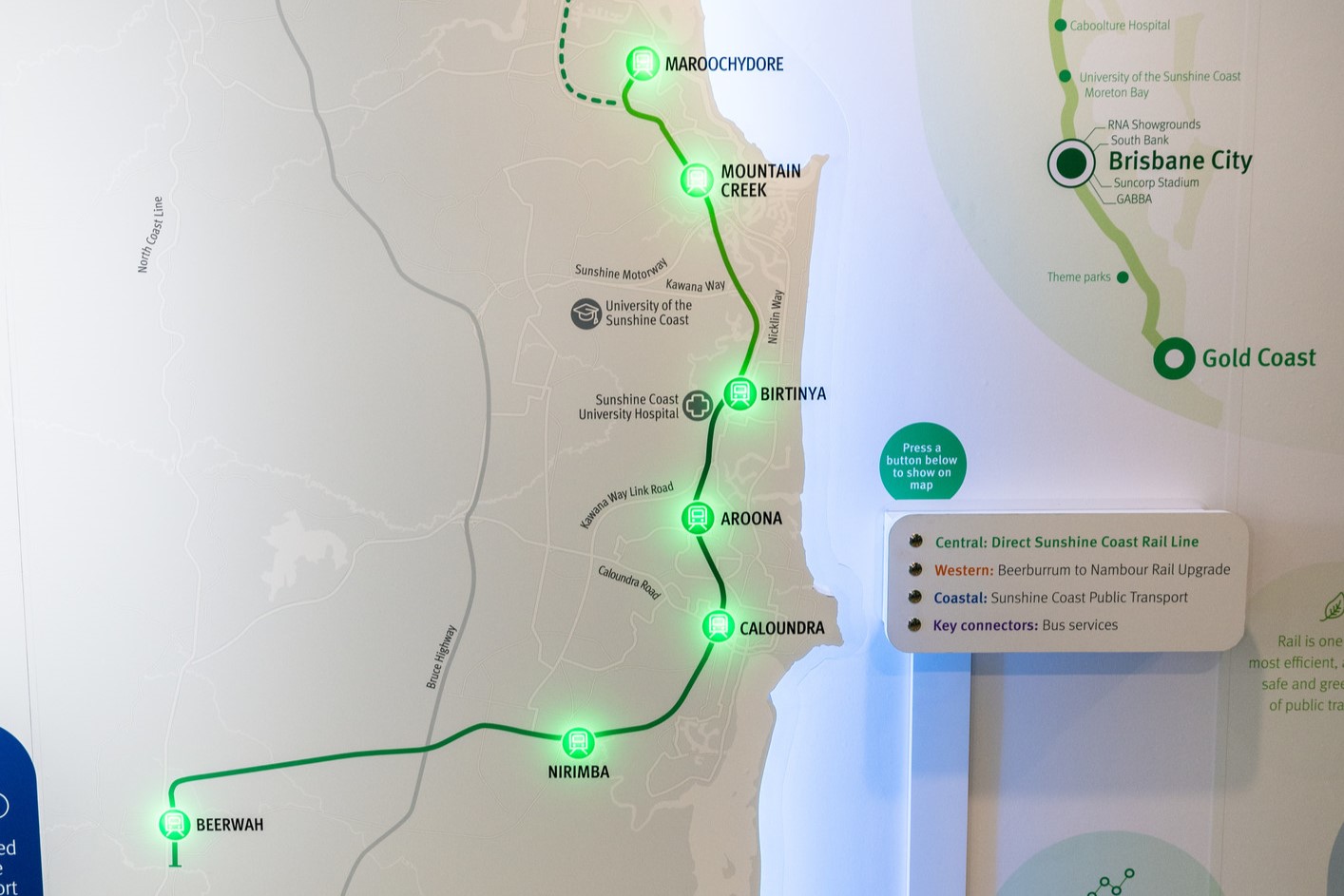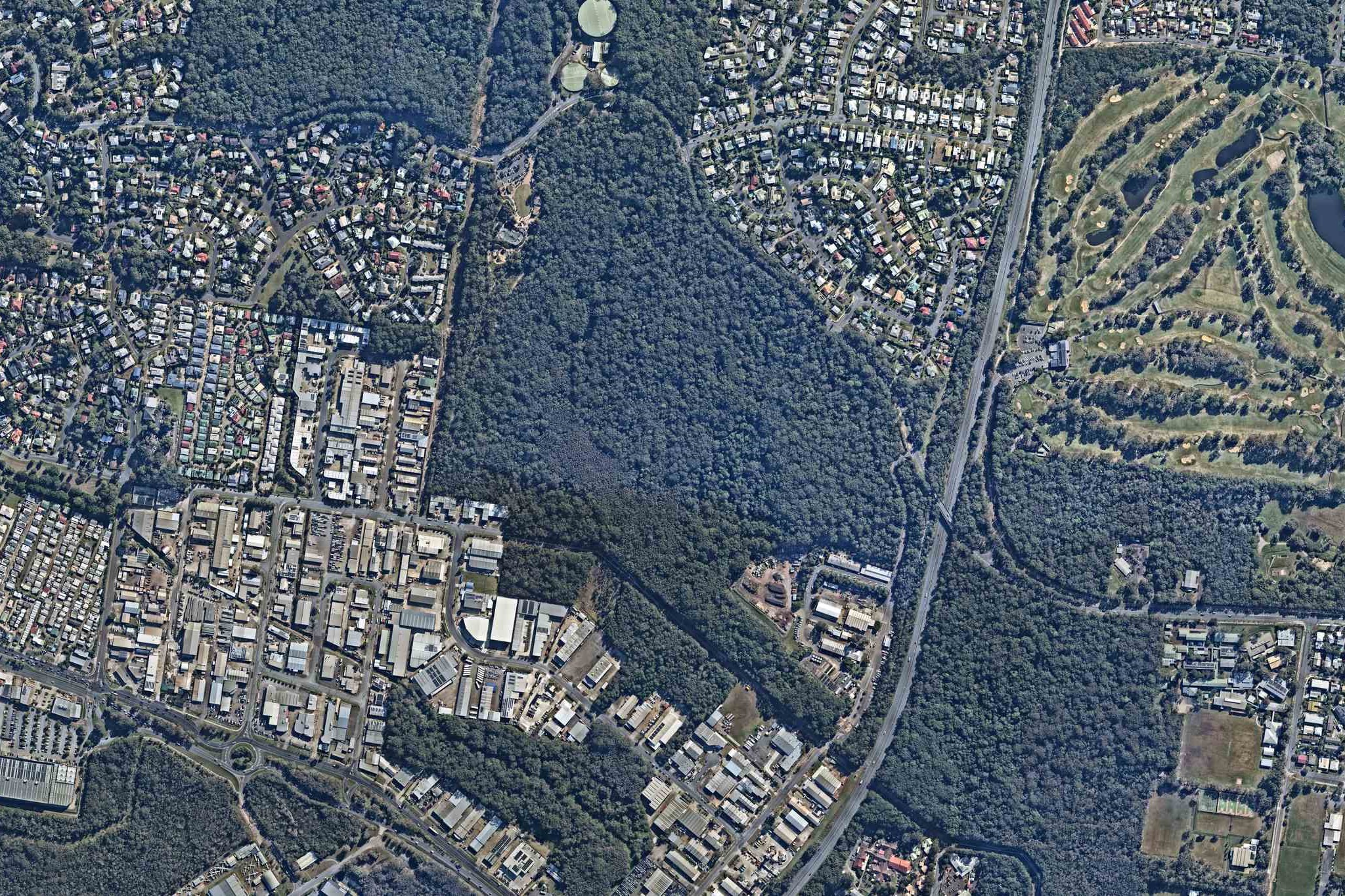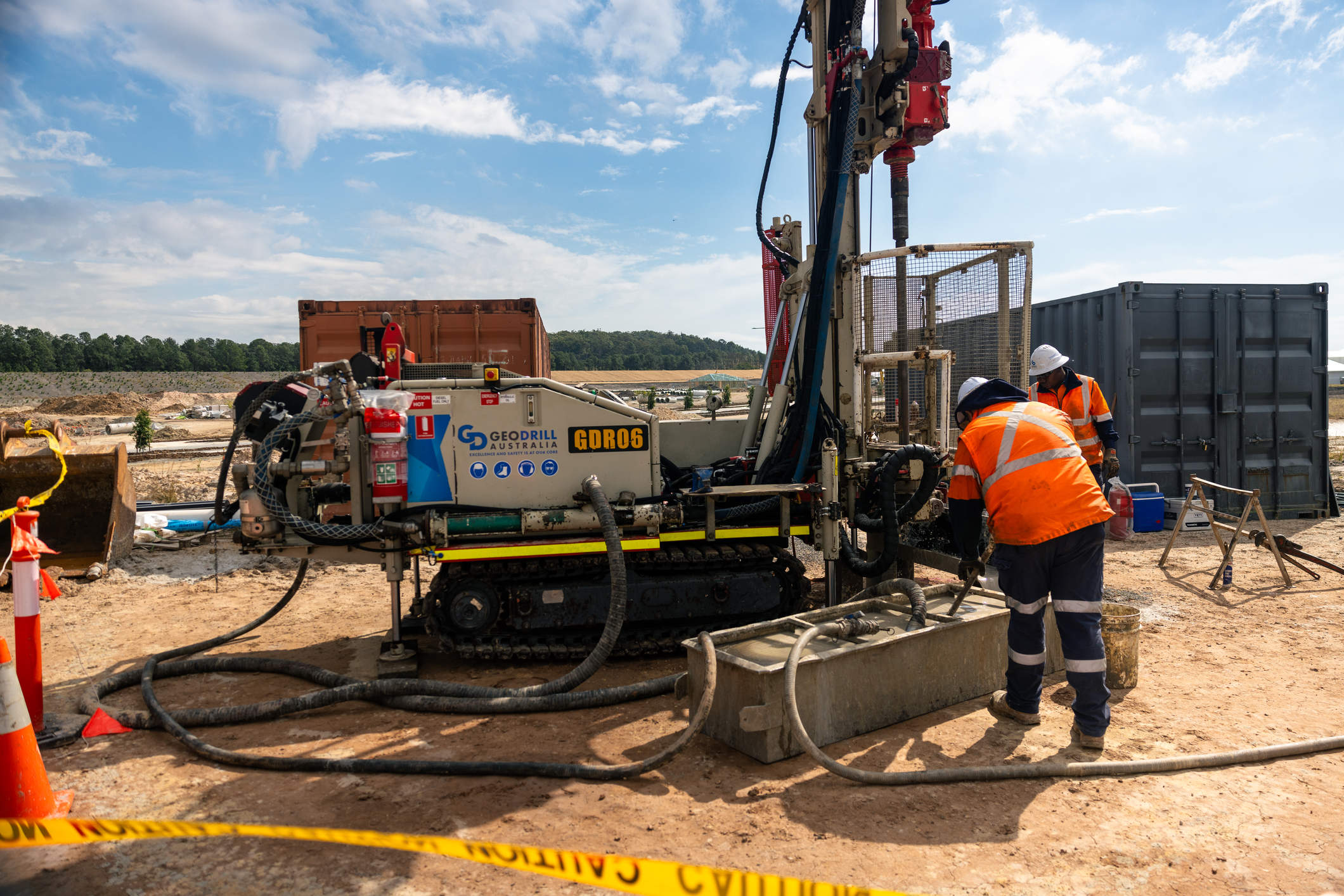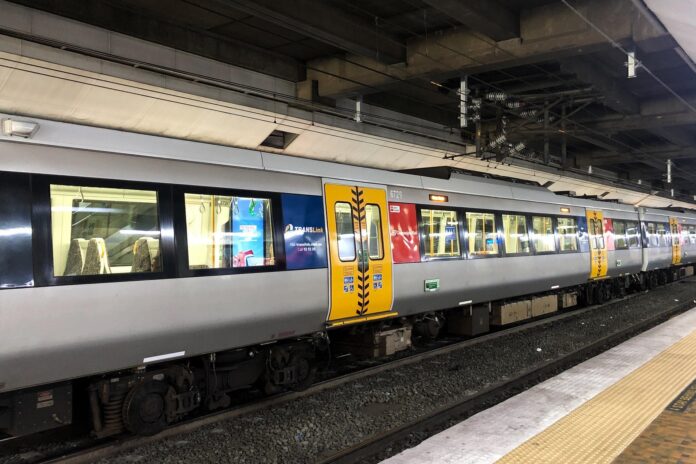Preliminary works have started on a rail tunnel that is expected to go below a Sunshine Coast town.
Site analysis is underway at the Sugar Bag Mountain Bike Trails area at Caloundra, where a 1.2km section of railway line is set to be built underground as part of a planned $12 billion track running 37.8km from Beerwah to Maroochydore that the LNP expects to complete by 2032.
The Department of Transport and Main Roads explained the work via a notification to stakeholders.
“The (geotechnical) investigations involve drilling on the trails, by specialist subcontractors and consultants,” it said.
“Boreholes and test pit excavations are required for investigating the ground conditions of the rail corridor, with samples collected and sent to laboratories for testing.”
Once built, the tunnel is expected to have no impacts on the mountain biking facility.

Sunshine Coast News asked TMR whether homes or businesses in the area could be affected but did not receive a direct response.
A spokesperson said the exact route of the tunnel was yet to be determined.
“Specifications for the tunnel, including tunnel portals (entry/exit points), will be confirmed as part of the detailed design for the project,” they said.
But the spokesperson said the tunnel would be located between Caloundra West (around the Mark Road East area) and Aroona (north of Sugar Bag Road).
“A tunnel at this location is proposed to minimise impacts to the town reserve (the mountain bike area),” they said.
“More detailed maps will be available in the coming months following the completion of further survey and design work.”
It’s estimated the twin-mined tunnel would be 1.2km long but it could be anywhere between 980m to 1.3km long.
With supporting tunnel infrastructure as extensions, it could stretch for 2.2km.
“This includes the approaches (known as the cutting or dive structure), which will be constructed at the tunnel portals on each side (entry/exit) to transition the rail track from ground level to tunnel,” the spokesperson said.
The tunnel would be between new train stations at Caloundra and Aroona, and would run mostly along a protected rail corridor, so minimal impacts are expected to homes.
It’s not yet known how much the tunnel could cost or how it would be paid for. It was included in revised plans for the estimated $12 billion Direct Sunshine Coast Rail Line last year.
The spokesperson said the tunnel would “minimise land, community, environmental and cultural heritage impacts”.

The DSCRL is set to be delivered progressively, including stage 1 (Beerwah to Caloundra), stage 2 (Caloundra to Birtinya) and stage 3 (Birtinya to Maroochydore).
Stage 1, worth $5.5 billion, is funded by the Queensland and Australian governments, with major construction expected to start in 2026 and be completed by 2032.
It includes delivery of a 19km dual-track rail line, and train stations, from Beerwah to Caloundra. It also includes the planning, design and market engagement to confirm costs and timeframes to deliver the line to Birtinya, and it includes the protection of the alignment to Maroochydore.
The tunnel is part of stage 2, which is currently unfunded for delivery, as is stage 3.

An information centre and satellite office has been established, tenders have been released and geotechnical investigations are well underway.
The LNP stated prior to the state election that it would build the line all the way to Maroochydore by 2032 if elected, but Labor had said a detailed business case showed that would be impossible because of costs, timing and project complexities.
Preliminary works activities are underway at multiple sites from Beerwah to Birtinya.
They include site surveys, flora and fauna mapping, cultural heritage and environmental investigations. Other activities include groundwater monitoring, noise and vibration testing, and public utility investigation.
Drill rigs have been activated at Aura, where the line and a station will be built.
The aerial imagery in this story is from Australian location intelligence company Nearmap. The company provides government organisations, architectural, construction and engineering firms, and other companies, with easy, instant access to high-resolution aerial imagery, city-scale 3D content, artificial intelligence data sets, and geospatial tools to assist with urban planning, monitoring and development projects in Australia, New Zealand and North America.
Do you have an opinion to share? Submit a Letter to the Editor at Sunshine Coast News via news@sunshinecoastnews.com.au. You must include your name and suburb.





